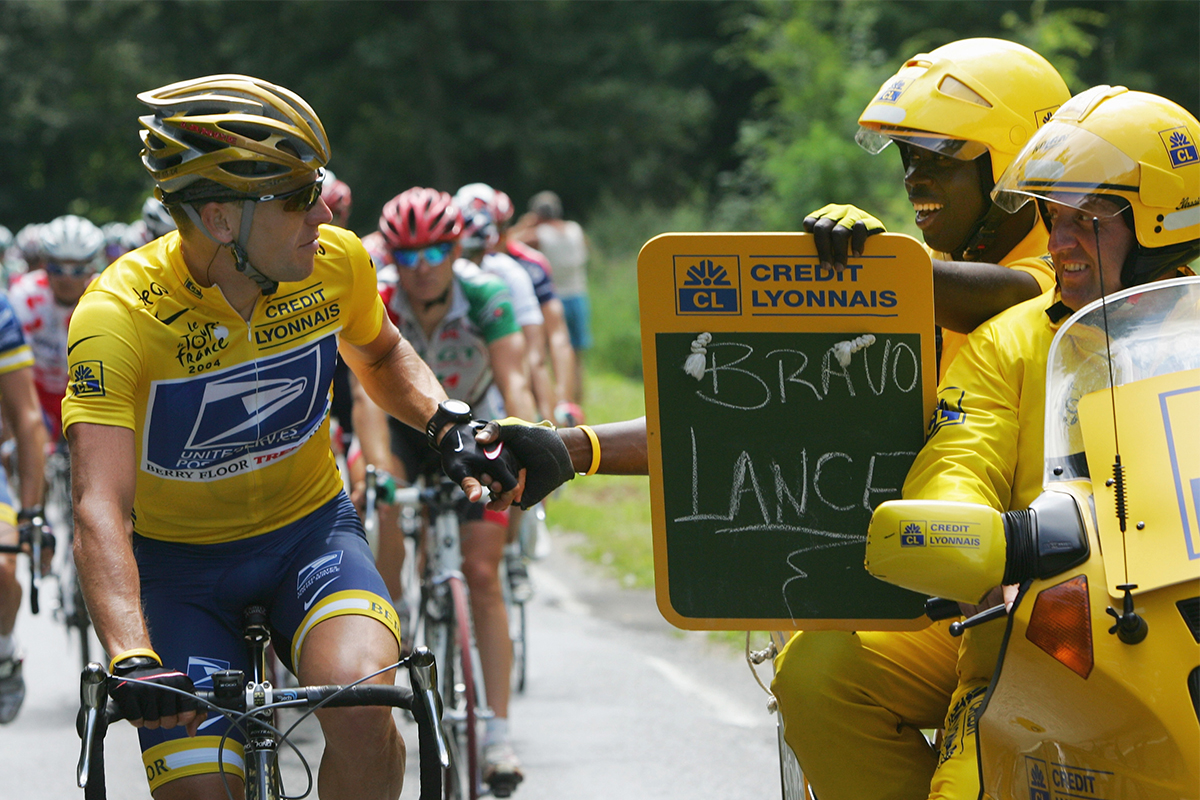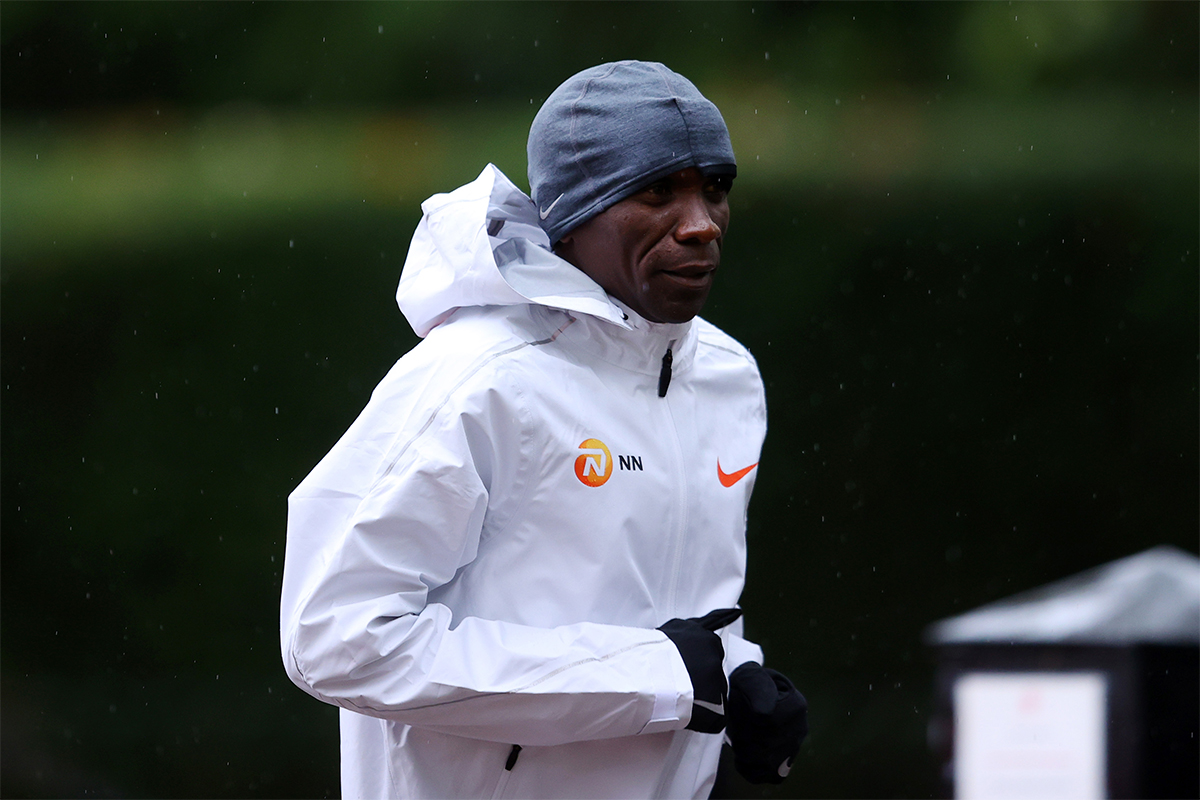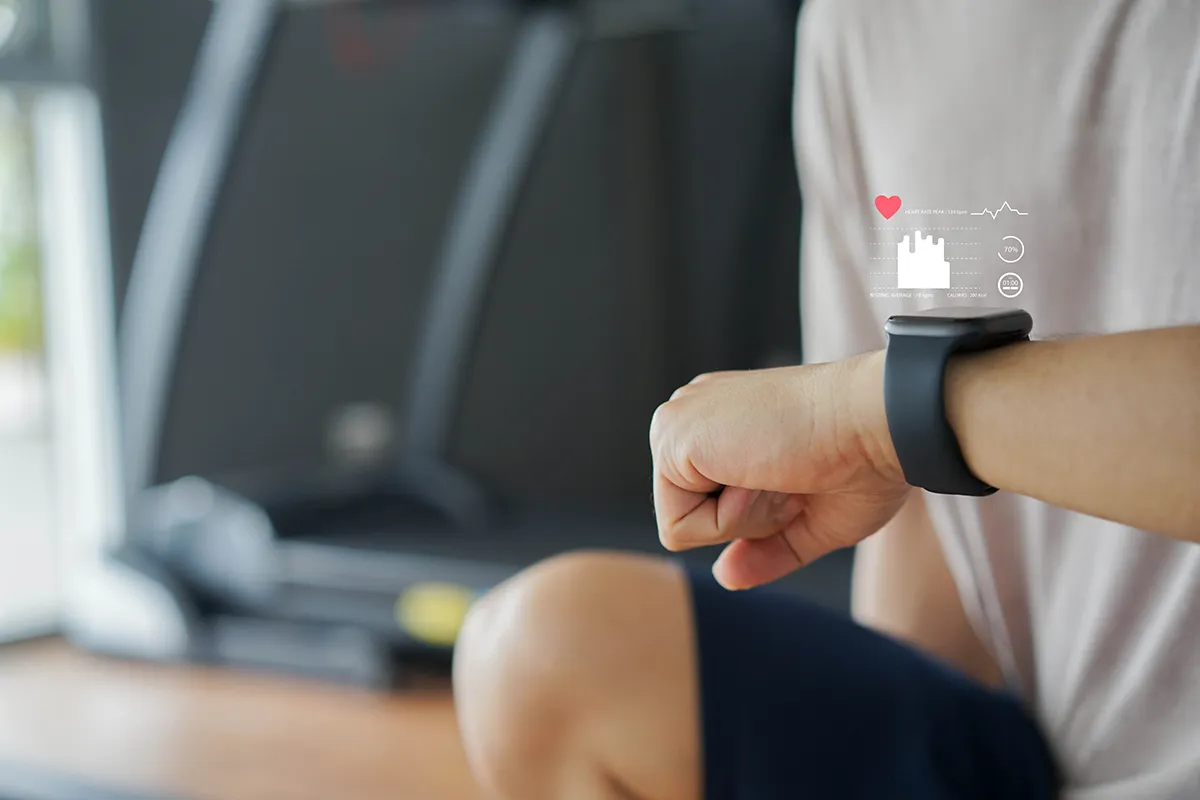Among the many numbers that sum up Lance Armstrong’s illustrious, controversial career, there’s one that feels even more mythic than his seven Tour de France titles. At the peak of his powers, the cyclist reportedly had a resting heart rate of 32 beats per minute. Is it true? That’s slightly unclear — the stat appears to have been listed on his website at one point, detailing a range of 32-34 beats per minute.
Other once-in-a-generation talents have had similar BPM buzz over the years; Usain Bolt apparently averaged 33 BPM when he was setting world records in the 100 and 200 meters, while Michael Phelps hovered closer to 38 BPM throughout his swimming career. And now and then, a fringe athlete claims an absolutely absurd number. In 2017, French biathlete Martin Fourcade (a five-time Olympic champion) posted a screenshot of a heart rate variability chart, which showed his RHR drop as low as 25 BPM.
Casual exercisers might not care, or fret, too much about these numbers — they’re inclined to throw them on the same pile as ridiculous wingspans or vertical leaps. There are some things, they conclude, that professional athletes are blessed with and they are not. At the same time, amateur endurance athletes, those with interest in trying their own marathons or triathlons, might put too much stock into RHR. It becomes another thing to track, another thing that needs improving, in pursuit of a race day PR.
But at a time when biometrics are more readily available than ever by way of fitness wearables (I receive a “report” every morning from my WHOOP 4.0), it’s important that those who have no understanding of RHR learn what it represents, and those who view it as some sort of holy statistic learn it isn’t a be-all end-all — for either performance or longevity.

According to Michael Matthews, a fitness and nutrition expert whose book Muscle for Life is coming out next year, resting heart rate is a convenient “barometer of your overall cardiovascular fitness.” Before all the fancy, everyday tech came out, there was a tried-and-true method for measuring one’s resting RHR. You might’ve even learned how to do it on a middle school gym class floor. As Matthews explains, “You can find your radial artery by placing your index finger on the thumb side of the inside of your wrist. Either hand works. Then count the number of beats you feel for ten seconds and multiply that number by six to calculate your RHR.”
Ideally, this should be done when you’re sitting down, a good five or six hours removed from your last workout and not hopped up on caffeine. Which is why most wearables catalogue RHR in the morning, just after you’ve woken up. What’s a normal range to fall into? For years now, doctors have put the average person between 60 and 100 BPM. But Matthews says that variance lacks nuance. “Considering that the average person is overweight, obese, and sedentary, it’s probably not best to look at ‘normal’ as ‘ideal’ in this case. Instead, a healthy range to shoot for would be closer to 50 to 80 beats per minute, and if you’re in very good shape, your resting heart rate might dip as low as 40 to 50 beats per minute.”
For those who are in very good shape, it all comes down to the strength of the heart muscle. Healthy hearts have a mighty ability to get blood supply throughout the body. They can pump harder — the volume per contraction is immense — without necessarily working harder. It’s pure efficiency, and it’s extremely common in endurance athletes. Consider: the average RHR of a marathoner is 47 BPM.
“Endurance training is the fastest and most effective way to reduce your resting heart rate,” Matthews says. “Think of cardio as a resistance training workout for your heart and blood vessels — they’re forced to pump and transport blood at a faster rate throughout your body, which makes them stronger, healthier, and more supple over time. Many high-level endurance athletes actually develop a slightly enlarged left ventricle, which is the compartment of your heart that pumps blood to the rest of your body. The heart muscle literally gets more “jacked” from pumping all of that blood.”

Another way to think of this? Similar to those old anti-smoking campaigns that would show you a blackened lung, it helps try to and understand what an unhealthy heart looks like and operates. Dr. Taylor Graber, a Scottsdale-based anesthesiologist, paints a vivid picture: “When the heart is squeezing into an aorta that’s stiff, rigid, and calcified, the afterload is high. If that heart has a history of smoking, diabetes, and atherosclerosis and multiple heart attacks, the contractility will be lower and the heart cannot pump as much blood with each beat.”
Here, “afterload” refers to the resistance the heart sees when squeezing out. Older hearts, overweight hearts, hearts that have seen cardiac events — they’re all going to struggle to pump blood throughout the body. Forget about performing like a world-class cyclist in Pyrenees; it’ll be enough to just march up the stairs each day. This is where paying attention to RHR is important, and could prove a crucial bellwether for every day health. If things have gotten that bad, chances are you’re acutely aware. But too often, it’s too easy to push our health issues to the back burner of the brain. Engaging with your RHR on a regular basis could help you confront what needs to be addressed.
How so? Take it from a triathlete: “The most effective way to decrease your resting heart rate is through aerobic exercise. Running, swimming, cycling. Weightlifting will help increase how muscular your heart is, but it will not increase the volume of your heart. Cardiovascular exercise is going to provide both.” That’s Dr. Todd Buckingham, exercise physiologist and world champion triathlete. You don’t have to start training for Ironmans. But know that until you start moving on a consistent basis, your RHR isn’t going to change from day to day. And according to the good doctor, that’ll leave you susceptible to “cardiovascular disease, diabetes, hypertension, certain types of cancer, anxiety, and even Alzheimer’s.”
What of those who do train everyday, though? How should those extremely “plugged in” to the world of wellness perceive heart rate? There are currently competitions across the world — the largest is called Space Out — from Seoul to Amsterdam, where contestants sit down in a forest and see who can achieve the lowest possible RHR. These kinds of events are well-intended (they’re trying to encourage some zen, at a time when the world has an entire Ikea baggie of screws loose), but they build on an idea, one compounded by the fabled BPM biometrics of Olympians, or the blatantly boastful, Instagram story screenshots of WHOOP, Apple Health or Fitbit data, that a low RHR is the ultimate endgame.
And it’s not. As Matthews says: “Let’s not mistake the map for the territory here. It’s an indicator. Your resting heart rate is impacted by your genetics and sex: Some men have smaller than average hearts and women tend to have smaller hearts than men, which means their hearts beat faster to deliver enough blood. This doesn’t mean you have a ‘weak’ heart or cardiovascular system, it just means your RHR might be a smidge higher than other folks, all else being equal. Just know that any reduction in your RHR is a reliable sign your fitness is improving. In other words, even if your resting heart rate is 70 (fairly average), if it used to be 100 a few months ago, you’re on the right track.”
For the serious athletes out there, consider focusing on heart rate variability, not just resting heart rate. (WHOOP is a pioneer in educating the masses on HRV, and has a fantastic explainer here.) One way to think about it, as we continue to cherry-pick famous endurance athletes here — the greatest marathoner ever, Eliud Kipchoge can sustain a pace where his heart beats at a rate of 170 contractions per minute. But at rest, his heart knows exactly how to kick up its feet and rest.
Dave Shelton, a personal trainer, breaks down why this matters for athletes: “The largest misconception regarding resting heart rate is that it should always be low. But in reality, you want to have a high heart rate variability. This means that you will have a low heart rate during rest, and a high heart rate during periods of exercise. High HRV is indicative of good health and improved recovery ability.” HRV squares in nicely with two of the most important workout cornerstones of the modern era: HIIT and recovery.
Shelton recommends crafting a combination of “high intensity (HIIT) and low intensity (LISS) training.” He tells clients to mix extremely difficult sessions (think hill sprints, Tabata sessions on stationary bikes, jump rope circuits) with basic, everyday exercise, like a 45-minute walk around the neighborhood. Committing to a variance in your workouts makes sure your heart knows when it actually is time to go into overdrive. For years, endurance athletes approached training with a “no days off” mentality. We called them “practice heroes” back in high school. They weren’t doing themselves any favors. The heart can’t learn (and increase) its maximum output if it reaches it every day. As with most aspects of fitness, you run the risk of plateauing — to say nothing of potentially injuring yourself.
While resting heart rate competitions do indeed exist now, there’s no need to turn yours into one. Remember: the lower your RHR gets, the closer you get to a Guinness World Record. (As of now, its 27 BPM, belonging to a British man named Martin Brady.) But then, you’re also closer to making it into Ripley’s Believe It or Not! An RHR that low is considered a medical condition.
There’s far more to performance and longevity than your RHR. Take stock of it, monitor it, celebrate it if you’re trying to nudge it down a bit. But understand that that’s not where your fitness should start (or end). Matthews refers to it as a guidepost. “One of the reasons tracking, comparing, and improving resting heart rate has become popular is simply because it’s easy to measure,” he says. But that doesn’t necessarily mean it’s the best touchstone of health, fitness and vitality. Focus on eating right, sleeping right and moving throughout the week. It’ll head where it needs to be in kind. There’s no sense in chasing Lance anyway.
Whether you’re looking to get into shape, or just get out of a funk, The Charge has got you covered. Sign up for our new wellness newsletter today.
























